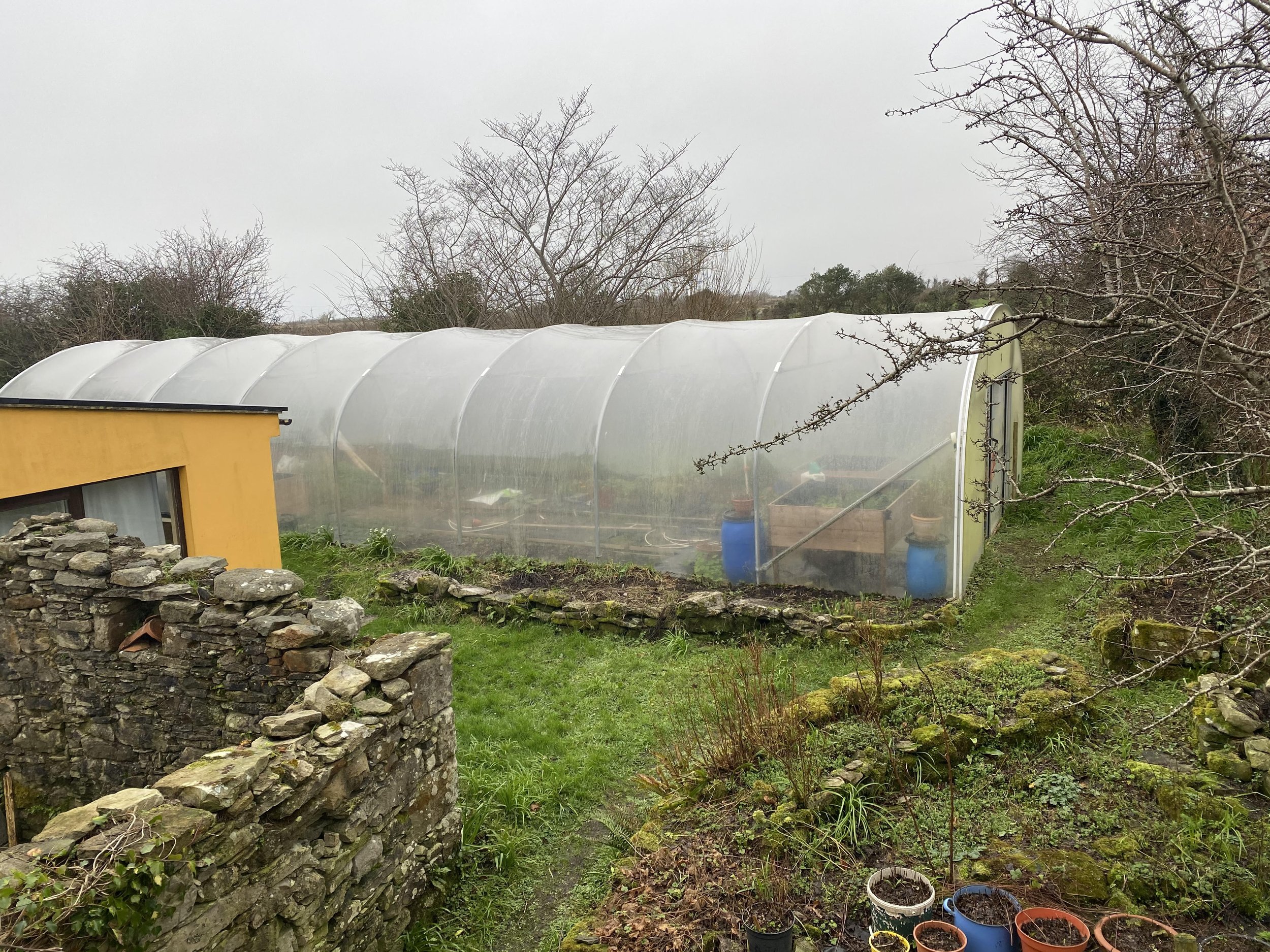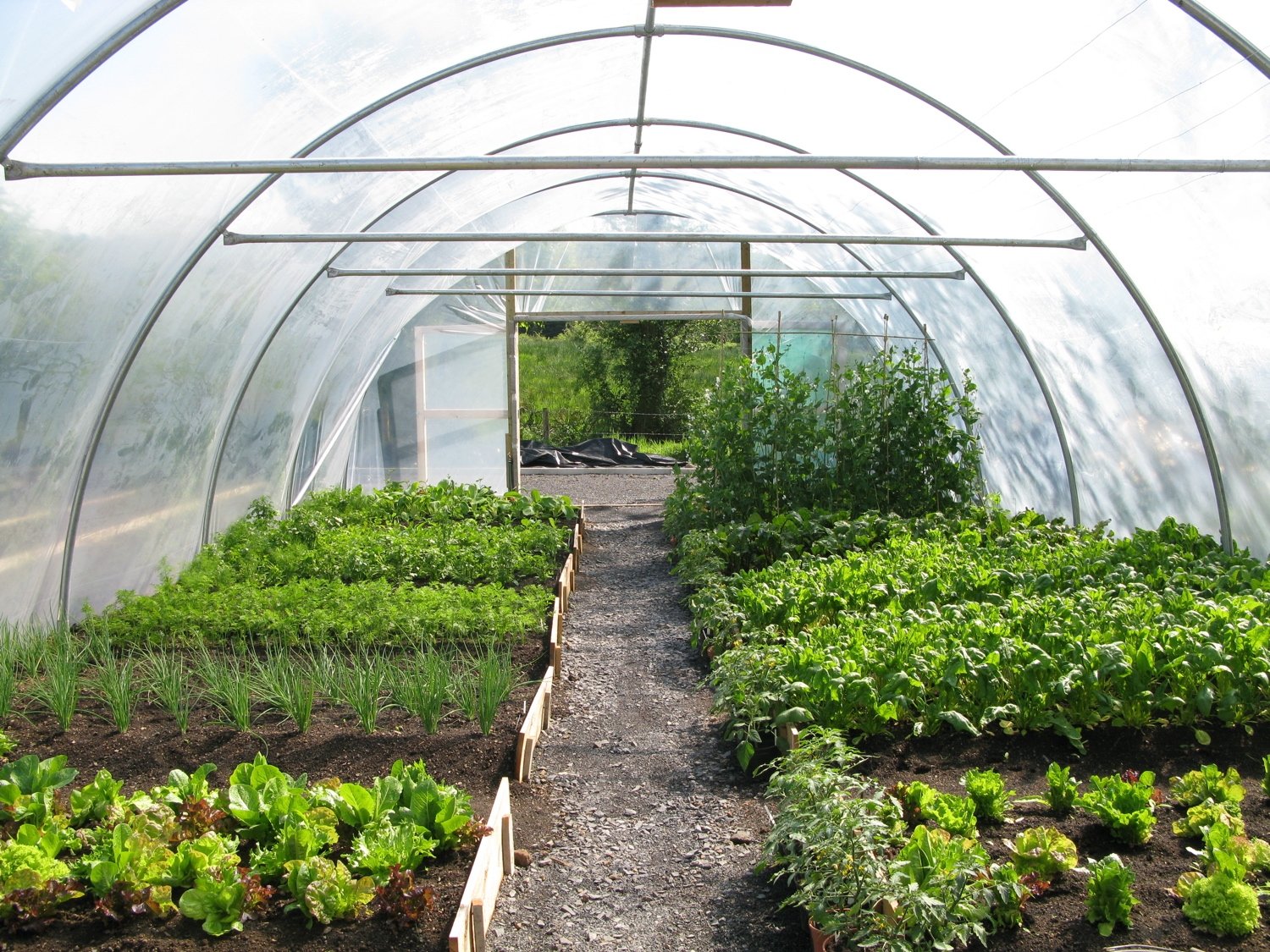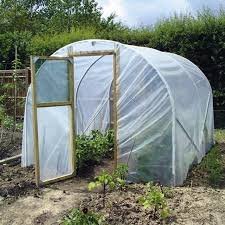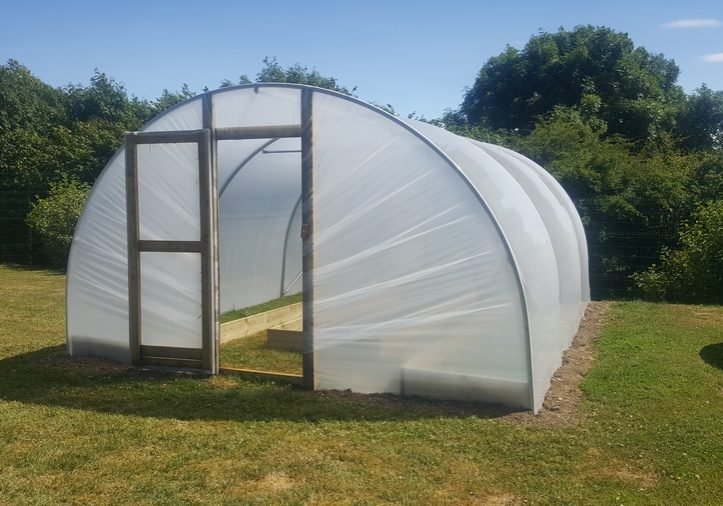Golden Rules for Polytunnels
The picture on the left is our polytunnel with straight sides, 16m long and big sliding doors. Next one is an 18 long polytunnel at The Organic Centre. Third pic is a very small polytunnel and the last picture is a medium polytunnel, but doors are much too small.
Golden rules for buying a polytunnel
• Buy as large as your site and budget allows
• Get quotes from suppliers and ask for back-up service (putting up the tunnel, replacement plastic, additional crop bars etc.)
• Buy the best and strongest plastic you can get and repair tape
• Prepare site before erecting the polytunnel
• Look for maximum ventilation when selecting the doors
Golden rules for growing in a polytunnel
Open and close every day
Establish a good watering routine
Have water supply very close to the polytunnel
Have a set-up that accommodates changes
Start with an easy rotation
Have mulching materials and crop covers at hand
Establish some permanent crops in the corners
Have a (semi-permanent) propagation bench in the polytunnel (needs electricity, outdoor socket!)
Have a polytunnel caretaker
Make your polytunnel as storm resistant as possible
In 40 years we have not lost a polytunnel because of a storm or wind damage and sometimes we probably got lucky that the wind blew from "the right direction" and no flying objects tore into the plastic. On the other hand we made sure to give our polytunnel the best chance of survival. Here is how:
The gable of our polytunnel faces into the main wind direction, which here is S/SW
The plastic (1000gauge) is very strong and really tight around the frame.
The frame is 50mm galvanised steel, tubes concreted in with support bars installed.
The plastic is trenched (2.5 ft down and 1ft wide)
The gable is a separate sheet of plastic clipped onto the frame,
Doors are sliding doors and firmly closed in a storm.
A hedge to the South, East and North acts as a natural windbreak
In our experience and we have seen it in our locality most tunnels that get damaged have often very loose plastic covers that flap in the wind and eventually tear often mangling the frame. One reason for loose covers can be that the plastic is not stretched properly and the setup rushed. This happens when the tunnels are setup in the Winter months when it’s cold. A warm, sunny and calm day is best so the plastic can stretch in the sun for a couple of hours before getting it tight.




